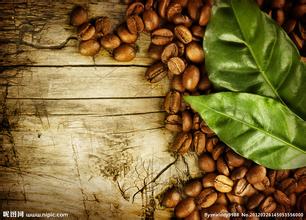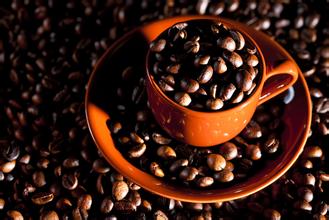Tanzania AA Coffee Bean Sieve size characteristics Flavor Description Taste Estate Introduction
Description of size and Flavor of AA Coffee Bean screen in Tanzania
Tanzania's main coffee producing area, located at the foot of Mount Kilimanjaro, is rich in volcanic soil. Some coffee trees planted here are more than 100 years old. Coffee was first introduced by Christians from Kenya to grow coffee. Coffee trees must be carefully taken care of, weeded and fertilized. Moreover, old branches must be cut off so that new branches can grow again to maintain the quality of coffee beans. Coffee bean processing plants are well equipped. Coffee beans are an important economic crop in Tanzania, and the local government attaches great importance to this industry.
Representative countries: Brazil, Indonesia, Ethiopia, Cuba, Peru, etc.
The method is to randomly take 300g samples and put them on black paper, and different defects correspond to different points, such as 1 point for 1 pebble, 5 points for 1 big pebble, 1 point for 5 broken beans and 1 point for 5 pest beans. Finally, it is graded according to the accumulated defect score, the highest level is NY2 and the lowest level is NY8. Indonesian coffee beans are divided into 6 grades, Gr1~Gr6, and Ethiopia coffee beans have the highest level of Gr2.
Most of the people who use this classification are South American countries. I don't know what Ethiopia and Indonesia do to represent countries: Guatemala, Costa Rica, Savaldo and other Central American countries.
The higher the altitude of the origin, the better the quality of coffee. Because of the low altitude and hot climate, coffee trees grow faster and absorb less soil nutrients, so the taste of coffee is poor.
Those growing at 1375m to 1524m are extremely hard beans (SHB); those growing at 915m to 1375m are high hard beans (GHB); those growing at 610m to 915m are called HB; those growing at 300m to 1000m are called Pacific grade (Pacific).
First: choose good quality coffee beans, because the use of poor quality coffee beans, of course, will greatly damage the flavor of coffee, even if the production of a very balanced single coffee, but also can not make delicious coffee, the choice of good quality coffee beans is the biggest point.
Second: get rid of defective beans, mixed with defective beans, the taste will become worse. Therefore, it is better to be missing than rotten to get rid of the defective beans without stinginess. For example, long worms with holes, abnormal development, shell without benevolence, will be picked out.
Third: understand the characteristics of coffee beans, if the individual characteristics of the coffee beans to be blended are not well understood, it is difficult to mix good or desired coffee, such as mocha coffee is more sour, it can not be used to dilute the sour taste of coffee.
Fourth: understand the different degree of roasting, the degree of roasting of different coffee beans is different, their flavor is also different, so we should also have a good grasp, such as Kilimanjaro, Blue Mountain is generally medium-shallow baking, carbon roasting is deep baking and so on.

Important Notice :
前街咖啡 FrontStreet Coffee has moved to new addredd:
FrontStreet Coffee Address: 315,Donghua East Road,GuangZhou
Tel:020 38364473
- Prev

Introduction to the flavor description of Ethiopian Sidamo coffee beans, the characteristics of varieties and producing areas
Ethiopian Sidamo Coffee Bean Flavor describes the characteristics of the varieties. Local small farmers began to grow organic coffee in 2001 and work closely with medium-sized coffee producers because they know how to grow forest coffee in the highlands. It is one of the micro-producing areas with regional characteristics in the Sidamo producing area. The coffee in this region is quite unique, producing coffee.
- Next

Description of roasting degree and Flavor of Sumatran Coffee beans introduction of variety grinding scale by taste treatment method
Description of roasting degree and flavor of Sumatran coffee beans the variety grinding scale introduces that Sumatran coffee is one of the most mellow and smooth coffee varieties in the world. Most coffee in Sumatra is processed dry and some semi-wet. Most of the coffee labeled Mandelin comes from the southern interior. The coffee grown in the west is called Gayo Mountain. Taste
Related
- Detailed explanation of Jadeite planting Land in Panamanian Jadeite Manor introduction to the grading system of Jadeite competitive bidding, Red bid, Green bid and Rose Summer
- Story of Coffee planting in Brenka region of Costa Rica Stonehenge Manor anaerobic heavy honey treatment of flavor mouth
- What's on the barrel of Blue Mountain Coffee beans?
- Can American coffee also pull flowers? How to use hot American style to pull out a good-looking pattern?
- Can you make a cold extract with coffee beans? What is the right proportion for cold-extracted coffee formula?
- Indonesian PWN Gold Mandrine Coffee Origin Features Flavor How to Chong? Mandolin coffee is American.
- A brief introduction to the flavor characteristics of Brazilian yellow bourbon coffee beans
- What is the effect of different water quality on the flavor of cold-extracted coffee? What kind of water is best for brewing coffee?
- Why do you think of Rose Summer whenever you mention Panamanian coffee?
- Introduction to the characteristics of authentic blue mountain coffee bean producing areas? What is the CIB Coffee Authority in Jamaica?

